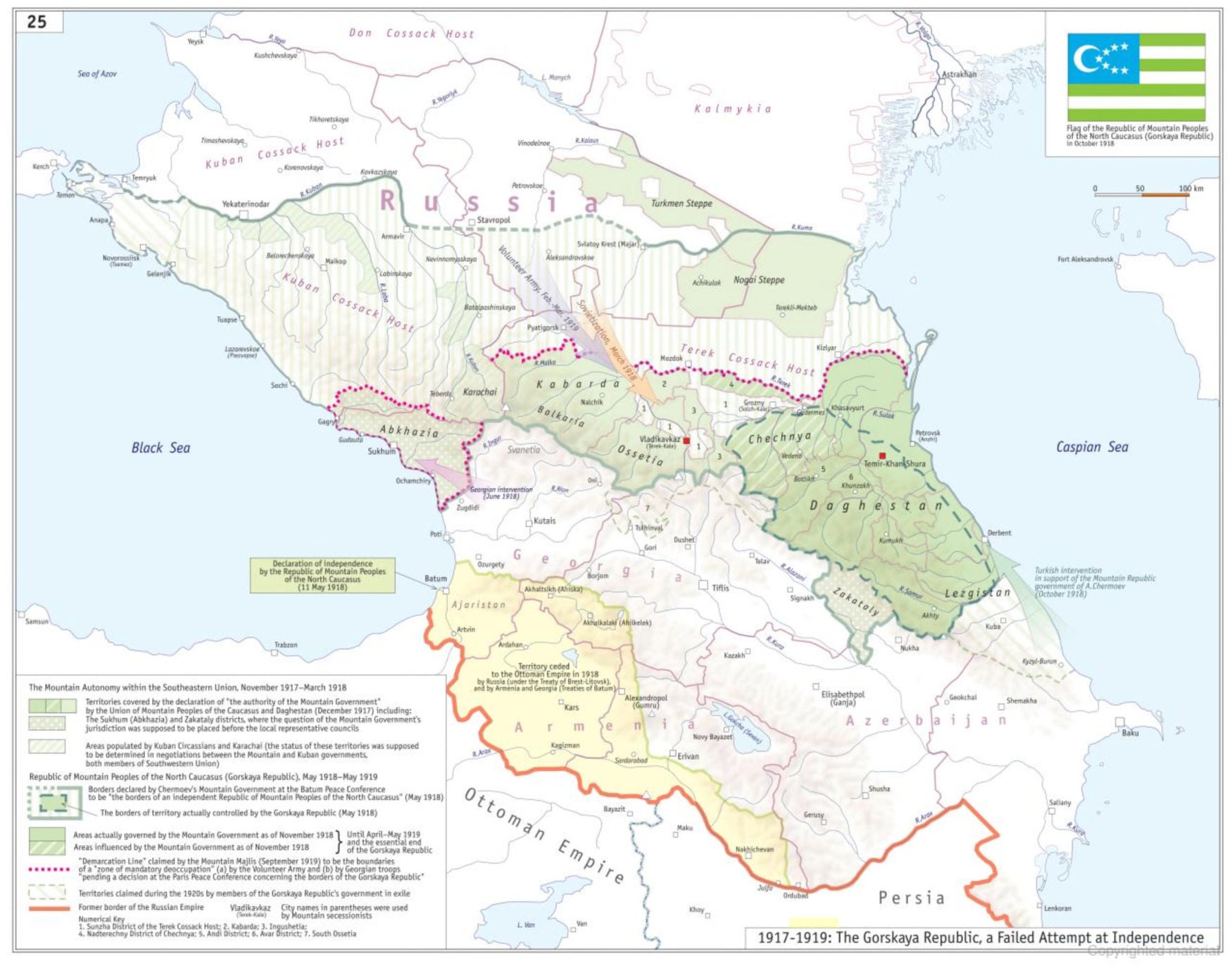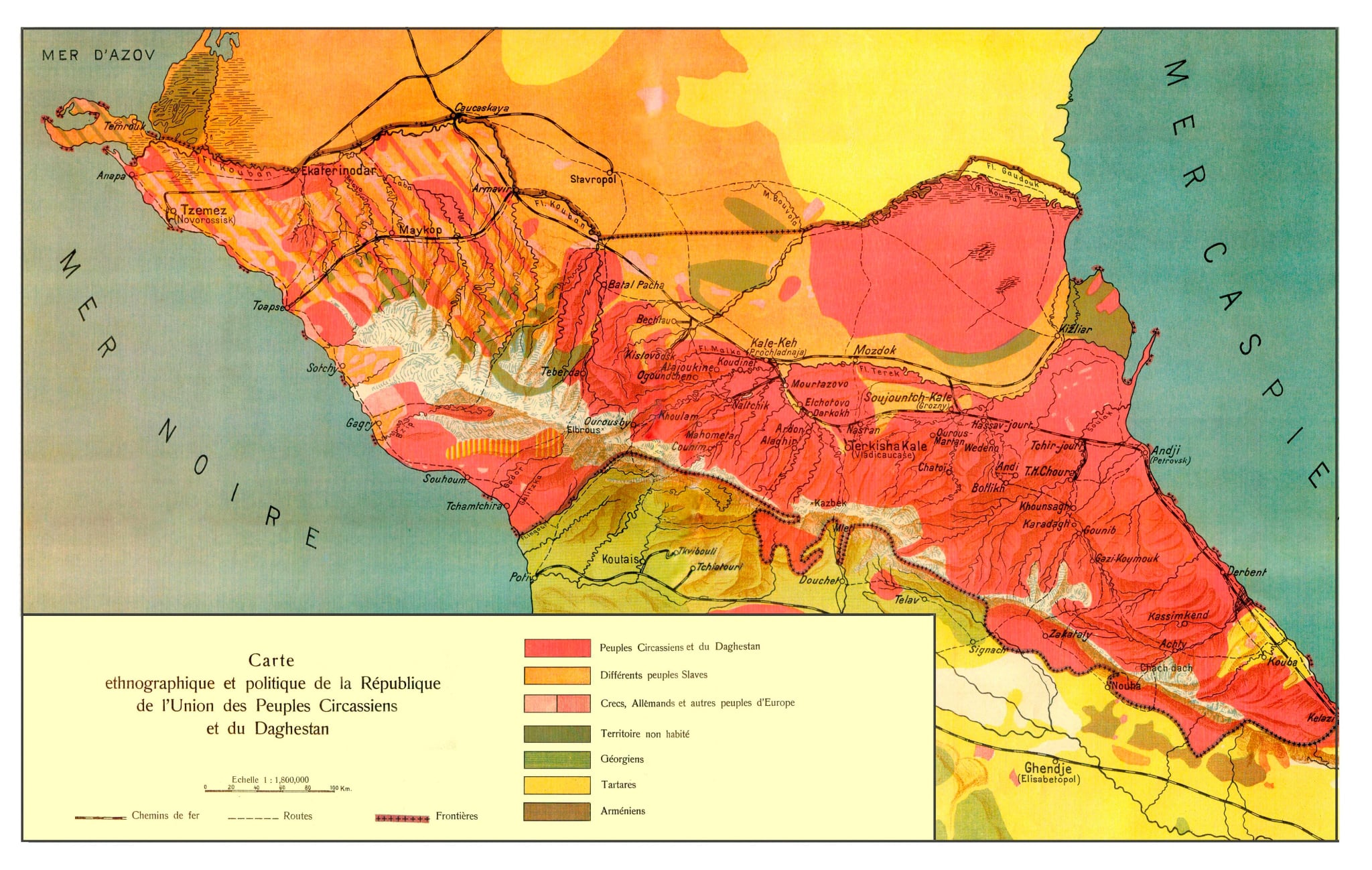The Treaty between Abkhazian National Congress and Georgian National Congress | 9 February 1918
On 8 November 1917, the Abkhazian People's Congress in Sukhum elected the first parliament, the "Abkhazian Peoples Council" (ANS) and the following vital documents were approved: "Declaration by the Abkhazian People's Congress" and the "Constitution of the Abkhazian People's Council". It is interesting to note that the representative of the Abkhazian Parliament gave the following address on 19 November 1917 in Tiflis at the opening of the first Georgian parliament (the Georgian National Council):
"I am happy that the high honour of conveying warm greetings to you on behalf of the Abkhazian People's Council has fallen to my lot. The Abkhazian people, as part of the Alliance of united mountain peoples, congratulate fair Georgia on its first steps on the way to national self-determination... The Abkhazians, having formed an alliance with their northern brethren are therefore convinced that in the near future they will join the noble Georgian people in a common alliance of all the peoples of the Caucasus. In this future alliance the Abkhazian people see themselves as full members of the United Mountain Peoples' Alliance". (See: Abkhazia, Georgia and the Caucasus Confederation, by Stanislav Lakoba [3. TsGVIA RF, f. 1300, op. 1, d. 130, l. 135 ob.])
On 9 February 1918 Abkhazian National Congress (ANC) signed a treaty with Georgian national Congress (GNC), which represented the Special Transcaucasian Committee. At that time of the signing of the agreement Georgia was, de facto under control of the Trancaucasian Commissariat. While Abkhazia was a part of the confederative Mountain Republic.

Source: Atlas of the Ethno-Political History of the Caucasus, by Arthur Tsutsiev (Yale University Press)
This agreement contained only three articles:
I) Воссоздать единую нераздельную Абхазию, в пределах от реки Ингур до реки Мзымта, в состав которой войдет собственно Абхазия и Самурзакан – нынешний Сухумский Округ [Абхазия].
[(Art. I) to re-establish a single, undivided Abkhazia within frontiers from the R.Ingur to the R. Mzymta, into the composition of which enter Abkhazia proper and Samurzaq'ano, or that which is today's Sukhum District/Abkhazia] ;
II) Форма будущего политического устройства единой Абхазии должна быть выработана на основе принципа национального определения Учредительным Собранием Абхазии: избранного на демократических началах.
[ (Art. II) The form of the future political construction of united Abkhazia must be worked out in accordance with the principle of national self-determination in the Constituent Assembly of Abkhazia, convened on democratic principles;]
III) В случае: если Абхазия и Грузия пожелают вступить с другими национальными государствами в договорные отношения, то взаимно обязываются иметь предварительные между собой по этому поводу переговоры.
[(Art. III) In case Abkhazia and Georgia should wish to enter into political treaty relations with other national states, they are mutually obliged to hold preliminary discussions with each other in this regard].
Hence this document signed between GNC on the behalf of the Special Transcaucasian Committee and ANC identifies the territory Abkhazia within frontiers from the R. Ingur to the R. Mzymta.
Moreover, this document is evidence the existence of Abkhazia as an independent and sovereign entity. Thus, the documents examined show that Abkhazia formed the Republic of the Union of Mountaineers and the South-East Union of the Cossack Armies, Mountaineers of the Caucasus and Free people of the Steppes after the dissolution of the Russian Empire in 1917, while Georgia was not a members any of these Unions. Additionally, there is an accord of 1918 signed by GNC on behalf of the Special Transcaucasian Committee and ANC, which implied the equality of the contracting parties (Special Transcaucasian Committee and Abkhazia), mutual respect for territorial integrity. As can be seen, Georgia as a sovereign and independent entity did not exist.
*****

Map of the Mountain Republic, printed in Lausanne and presented at the Paris Peace Conference (1919). "CARTE: ethnographique et politique de la Republique de l'Union des Peuples Circassiens et du Dagestan" (1919).
An excerpt from:
The Abkhazia Conflict in Historical Perspective, by Eva-Maria Auch
In: IFSH (ed.), OSCE Yearbook 2004, Baden-Baden 2005, pp. 221-235.Independence or Autonomy: Abkhazia under Soviet Rule
The revolutions of February and October 1917 and the civil war and war of intervention that followed created completely new conditions for the realization of national ambitions. The numerically small Abkhaz people had a number of potential allies among whom they were able to choose: Russia, Turkey, union with the “Mountain Peoples’ Republic of the North Caucasus”, the “Transcaucasian Federation”, or the Georgian Republic.
Following the failure in November 1917 of the attempt to unite with the peoples of the North Caucasus, the Abkhaz People’s Soviet in Sukhumi signed an agreement on 9 February 1918 on mutual relations with the Georgian National Council. This recognized an “indivisible Abkhazia within frontiers stretching from the River Ingur to the River Mzymta” (later known as the River Psou). However, this did not stop the Georgian Democratic Republic that was declared in May 1918 from sending troops to “meet the Bolshevik menace” in June 1918 with German backing. To this day, Abkhazians consider this the date of their country’s annexation by Georgia, while Georgians speak of the “restoration of Georgian unity”.19 Following Georgia’s conquest by the Red Army in February 1921, Abkhazia’s legal status came up for discussion once again: A “Soviet Socialist Republic of Abkhazia” was initially declared on 4 March 1921 alongside the “Soviet Socialist Republic of Georgia”. On 21 May 1921, a decision was made on the incorporation of Abkhazia in a Georgian federation, and, in a separate treaty of union, signed on 16 December 1921, the two republics agreed on especially close military, political, and financial/economic co-operation. Abkhazia joined the Transcaucasian Federation as an equal partner of Georgia, Armenia, and Azerbaijan, and, as a member of the Federation, participated in the founding of the Soviet Union as a full subject of international law.
*****
'The Free and Independent Social-Democratic State of Georgia' will always remain in my memory as a classic example of an imperialist 'small nation,' Both in territory-snatching outside and bureaucratic tyranny inside, its chauvinism was beyond all bounds.
- In Denikin’s Russia and the Caucasus, 1919-1920. By C.E. Bechhofer. Page 14